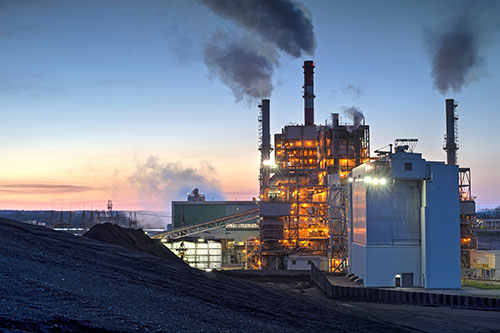Even before summer officially began, parts of Kansas and Missouri saw the year’s first heat wave stress an electrical grid nearly consumed by a cold snap just a few months ago.
Earlier this month, as air conditioners worked overtime to keep up with peak temperatures in the 90s, the Southwest Power Pool, which manages electricity across 14 states from Louisiana to Wyoming, issued a resource alert, telling utilities it was experiencing high usage, though it didn’t expect energy shortages.
And Evergy activated its “Energy Savings Events,” raising the temperatures slightly in participating customers’ homes. It’s the first time since rolling blackouts in February that SPP customers have been alerted to strain on the grid.
But experts and utilities say they’re prepared to handle summer peaks.
It’s “nothing, at least from our expectation about what we see in the data, nothing compared to what we saw in the winter,” said John Moura, director of reliability assessment and performance analysis, for the North American Electric Reliability Corporation.
Every spring, NERC assesses reliability across the grid. This year, it determined SPP, which Evergy belongs to, had “normal risk,” its lowest-level risk category. But the Midcontinent Independent System Operator, the transmission organization covering Ameren Missouri, is at elevated risk for energy shortfall if it experiences extreme demand or generator outages. It has enough power to meet requirements during normal peaks. That doesn’t mean the whole of MISO is at risk.
Both Ameren and Evergy say they’re geared up for the summer heat.
On the whole, Moura said, the power system is highly tuned for summer. Utilities expect demand to peak every year in the summer and prepare for it. He said NERC’s own forecasts are better in the summer, where extreme weather can be harder to predict in the winter.
“The winter … we all think is something that really can’t happen again, and we’re going to make sure through a variety of different mechanisms that the system is much more resilient to withstand that,” Moura said.
Summer temperatures
Average daily temperatures in Kansas City reached a peak of 87 degrees on June 17 and 18. Max temperatures on those days reached 98. While that didn’t break existing three-digit temperature records, it was warmer than normal for June.
Averaged over the past 30 years, Kansas City max temperatures in June are normally in the low to mid 80s.
Kansas City’s heatwave paled in comparison to severe heat in the southwest — where temperatures soared well above 100 degrees — and Texas, where the Electric Reliability Council of Texas asked residents to scale back their power usage last week.
But summer temperatures drive electrical demand to its peaks every year. And where frigid temperatures in February led to a shortage of natural gas and caused some issues for wind turbines, summer brings its own challenges from extreme heat to severe storms.
“Picture a storm event that knocks out several power lines and then the next day the storm clears and it’s 98 degrees outside,” said Kevin Anders, vice president of operations and technical services for Ameren Missouri.
Over the next month, temperatures in the West, across the northern United States and in the Northeast are likely to be higher than average.
In Kansas and Missouri, the National Weather Service says there’s roughly equal probability temperatures and precipitation could be above or below normal. Average high temperatures in July in Kansas City over the last three decades are typically in the high 80s.
Stemming demand
When demand is high, both Evergy and Ameren have voluntary programs that allow the utility to cool customers’ homes off and then raise the temperature slightly to reduce the amount of energy during peak times.
Industrial-level battery storage may be widely available in the future, but for now, electric utilities have to match energy demand moment by moment. Meeting peak demand times requires reducing customers’ usage or having loads of extra generating capacity only to need it a few times a year.
“You can design for incredible reliability, but then it’s going to be incredibly expensive,” said Ashok Gupta, a senior energy economist for the National Resources Defense Council.
Gupta wants utilities and state regulators to focus more on energy efficiency programs, lowering customers’ demand by better insulating homes and replacing outdated air conditioners or HVAC units. Evergy presented to the Kansas Corporation Commission on Thursday, saying it has some of those programs in Missouri.
“We can generate more electricity and generate more electricity, but if half of that is going out of leaky windows and leaky roofs, how is that cost effective?” Gupta said.
_ _ _
Story by Allison Kite / Kansas Reflector



